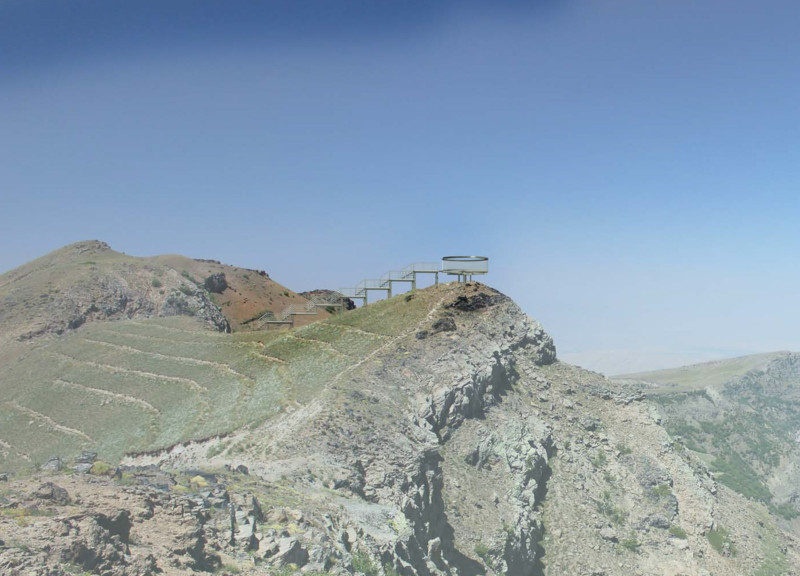5 key facts about this project
The Nemrut Volcanic Eyes Viewing Platform is situated in Turkey, designed to immerse visitors in the impressive volcanic landscape that surrounds it. The platform prioritizes the stunning views found in this region, using the natural environment as its focal point. The overall design concept emphasizes a harmonious connection between the built structure and the landscape, ensuring that the experience of nature remains at the forefront.
Design Concept
The platform adopts a round form, which allows for an open feel and enhances the connection to the scenery. By extending out over the rocky edges, it encourages people to engage with the landscape. The idea is that the platform acts as an extension of the surrounding area, promoting the experience of being suspended above the ground while enjoying the breathtaking views.
Structural Elements
A prominent feature of the platform is the stairway that leads visitors upward to the viewing area. This stairway serves both a practical and experiential function, guiding users in a gradual ascent. The design builds anticipation as visitors climb, culminating in rewarding views of the dramatic volcanic landscape that characterizes the region.
Materials and Aesthetics
The choice of materials reflects a balance between strength and visual appeal. Aluminum posts provide essential support while minimizing visual barriers, keeping attention on the stunning surroundings. The edges of the platform are framed with stainless steel, which adds a modern touch. Tempered glass is used for the balustrade, offering clear views and enhancing safety. Its gentle curve complements the round shape of the platform and helps create a consistent visual experience.
Detailing
Noteworthy in the design is the balustrade integration, which serves an important safety role while contributing to the overall look of the platform. The curved glass allows for unobstructed sightlines, allowing visitors to see the volcanic landscape more clearly. This careful attention to detail highlights the intent to foster a close relationship between the built environment and the natural world, inviting people to truly engage with their surroundings.


























